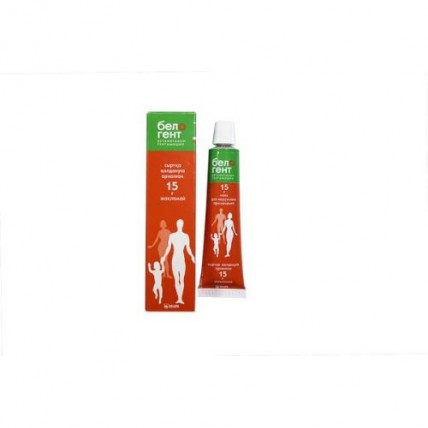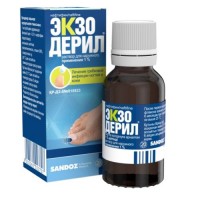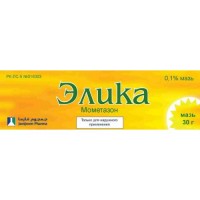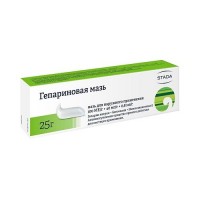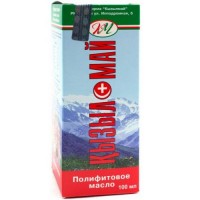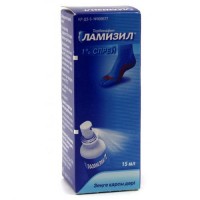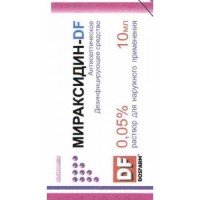The instruction for medical use of Belogent Torgovoye medicine a name of Belogent the International unlicensed name Is not present the Dosage form Ointment for external use Structure 1 g of drug contains active agents: betamethasone Dipropionas - 0.640 mg (0.500 mg of betamethasone are equivalent), Gentamycini sulfas - 1.660 mg (1.000 mg are equivalent to the gentamycin basis) excipients: vaseline, liquid paraffin. Description Translucent uniform ointment of white color. Pharmacotherapeutic group Glucocorticosteroids for topical treatment of diseases of skin. Glucocorticosteroids active in a combination with antibiotics. Betamethasone in a combination with antibiotics. The ATX D07CC01 code the Pharmacological Pharmacokinetics On properties absorption of betamethasone at topical administration influence many factors, including a condition of epidermis and also existence of occlusion. Inflammations of the skin, use of occlusive bandages can strengthen drug absorption. System absorption after external use is 12-14%. About 64% of betamethasone reversibly contact proteins of plasma, the volume of distribution is 1.4 l/kg. Betamethasone is metabolized in a liver, elimination half-life makes 5.6 hours. Metabolites are removed more through bile and smaller quantity with urine (about 5%). Gentamycin when drawing on the uninjured skin is soaked up in insignificant quantity, absorption from the injured skin is 5%. As well as other aminoglycosides, gentamycin badly contacts plasma proteins and it is almost completely removed by means of glomerular filtration. The pharmacodynamics Betamethasone is synthetic fluorinated adrenokortikosteroidy for topical administration in dermatology, it possesses the significant anti-inflammatory, immunosuppressive and anti-proliferative action. It is the synthetic analog of Prednisolonum having high corticosteroid activity in combination with insignificant mineralokortikoidny effect. The corticosteroids intended for topical administration, including betamethasone Dipropionas show anti-inflammatory, antipruritic and vasoconstrictive action and therefore they are used for treatment of some dermatosis at which use of corticosteroids is justified. The exact mechanism of action of local corticosteroids is unknown, however, as believe, this combination of anti-inflammatory, immunosuppressive and anti-proliferative effects from which the most important is nonspecific anti-inflammatory action. Actually, corticosteroids promote reduction of education, release and activity of chemical mediators of inflammation (quinine, a histamine, lizosomalny enzymes, prostaglandins). To start inflammatory reaction which is carried out with mediation of the mediators stated above it is necessary to have leukocytes and macrophages, and the corticosteroids applied locally inhibit migration of the specified cells to the defeat center, local reduction of degree is promoted by expansion and increases in permeability of blood vessels. The vasoconstrictive effect provides reduction of an ekstravazation of serum and, therefore, allows to eliminate formation of hypostases. Corticosteroids also show immunosuppressive effect concerning development of reactions of hypersensitivity of III and IV types – by inhibition of toxic activity of antigen-antibody complexes which are postponed on walls of blood vessels, causing an allergic vasculitis of skin. Corticosteroids interfere with manifestation of activity of lymphokines concerning target cells and macrophages who together cause allergic reaction, for example, allergic contact dermatitis. Corticosteroids also interfere with access of sensibilized T lymphocytes and macrophages to target cells. Gentamycin – the antibiotic from group of aminoglycosides having bactericidal effect concerning the majority of gram-positive and gram-negative microorganisms, including Streptococcus spp strains. (beta and hemolytic, alpha and hemolytic), Staphylococcus aureus (the koagulazo-positive, koagulazo-negative and some strains producing penicillinase), Proteus spp., Escherichia coli., etc. Gentamycin suppresses synthesis of protein in cells of bacteria by linking with a certain receptor protein in a subunit 30S of bacterial ribosomes, breaks functioning of an initial complex between RNA and a subunit 30S that leads to inhibition of synthesis of protein. Wrong reading DNA results that leads to formation of nonfunctional proteins. The bactericidal effect is result of it. Indications - the inflammatory dermatosis sensitive to corticosteroid drugs when the disease is complicated by the consecutive infection caused by the microorganisms sensitive to gentamycin or when the possibility of accession of such infections the Route of administration and doses Only for external use is suspected. Unless otherwise specified, drug should be applied one or twice a day at adults and once a day – at children. At improvement of a state
the frequency of putting drug can be reduced. Route of administration: Drug should be applied in the form of a pellicle, slightly rubbing in an affected area of skin. The processed site of skin should not exceed 10% of the total area of a body surface on the area. At children this drug should be used, whenever possible, during minimum short span and on small sites of skin. Use of drug for children demands bigger care as, in comparison with use of corticosteroid drugs for adults, for children betamethasone and gentamycin are more soaked up through skin. In view of possible absorption of betamethasone this drug should not be used in combination with an occlusive bandage and diapers. This drug is used for oily skin or at therapy of the damp centers of damages of skin. Treatment duration: In view of the content in gentamycin drug, treatment at adults should not exceed the term of 7-10 days, and children have 7 days. At the corresponding clinical situations (at some dermatosis when there is no need for introduction of strong corticosteroids any more or in the absence of the activators of superinfection sensitive to gentamycin) it is necessary to continue treatment in the form of monotherapy by less strong corticosteroid or other antibiotics. Side effects - hypersensitivity of skin (burning sensation, an itching, irritation, dryness) - a folliculitis - a hypertrichosis - aknepodobny rash - hypopigmentation - perioral dermatitis - allergic contact dermatitis - maceration of skin - a skin atrophy - striya - a heat rash - secondary infection of skin System side effects at children - oppression of a hypophysial and adrenal system - growth delay, the increase in intracranial pressure which is followed by protrusion of a fontanel, a headache - lag in a weight increase - Cushing's syndrome System side effects at external use of betamethasone happen owing to long treatment, drawing on the big area of skin, drawing on skin to the broken integrity, when using under occlusive bandages - a growth inhibition, an Icenco-Cushing syndrome, benign increase in intracranial pressure after the end of treatment, a hyperglycemia, a glucosuria, a hypopotassemia, increase in arterial blood pressure. Contraindications - hypersensitivity to betamethasone, gentamycin or any of drug components - vaccine-challenged skin reactions - viral, bacterial, fungus skin diseases (a pyoderma, syphilis, a tuberculosis cutis, chicken pox, herpes, actinomycosis, blestomikoz, a sporotrichosis) - perioral dermatitis, a rozatsea, trophic ulcers against the background of chronic venous insufficiency - diseases of eyes - the accompanying system administration of aminoglycosides (in view of risk of achievement of toxic concentration in blood serum) - a heavy renal failure - children's age till 1 year - pregnancy - skin tumors (a carcinoma cutaneum, a nevus, an atheroma, an epithelioma, a melanoma, a gemagioma, a xanthoma, sarcoma. Medicinal interactions combined use with other dermatological drugs in view of possible easing of therapeutic effect of this drug is not recommended. Gentamycin interacts with Amphotericinum B, heparin, Sulfadiazinum, beta laktamnymi antibiotics (for example, cephalosporins). Special instructions Drug should be used with care as gentamycin is its part. It should be noted cases of the inadequate response to antibiotic treatment and to define cases when antibiotic treatment is contraindicated. It is necessary to show care when putting this drug on face skin. It is necessary to avoid long-term continuous therapy or use of drug on a big skin surface in view of a possibility of absorption of drug in a system blood stream. System side effects which were registered after system absorption of drug including signs of suppression of function of adrenal glands, can also develop when using of locally applied corticosteroids, especially at babies and children of advanced age. Their weight can increase with strengthening of system absorption of betamethasone of Dipropionas, increase in terms of treatment if drug is applied on extensive parts of the body or in skin folds. Treatment of infections of skin with administration of gentamycin introduces risk of development of allergic reactions. Gentamycin represents contactant, the frequency of emergence of a sensitization to which is about 1.4%, with a tendency to growth. With increase in duration of therapy the risk of developing of an allergy increases. Together with other aminoglycosides, such as Neomycinum and Kanamycinum, gentamycin treats to group of allergens. Allergic reaction to locally applied gentamycin makes impossible in the future to carry out system administration of gentamycin and other aminoglycosides. In certain cases long-term use of antibiotics can lead to forming of steady options of pathogenic microorganisms, including mushrooms. In such cases and also at emergence of irritation of skin during treatment, development of allergic reaction or superinfection administration of gentamycin it is necessary to stop and appoint the corresponding treatment. System absorption of locally applied gentamycin can increase if drug is used on extensive sites of a body surface, especially at long-term treatment or if skin is injured. In these conditions the appropriate measures of precaution at children as emergence of the same side effects is possible, as after system use of gentamycin have to be taken. Drug should not be used at treatment of ulcers in a shin varicose vein disease (trophic ulcers). Pregnancy and the period of a lactation Use of drug during pregnancy is contraindicated. It is established that gentamycin at system use is emitted with breast milk. Data on excretion of locally applied Dipropionas betamethasone in breast milk are absent. During breastfeeding the use of the drug Belogent is possible according to strict indications, but at the same time drug cannot be applied to skin of a mammary gland before feeding. Drug children can appoint use in pediatrics since 1, with care and to the shortest term. To feature of influence on ability to control of vehicles and service of moving mechanisms of Data on an adverse effect of drug on ability to run vehicles and mechanisms is not available. The overdose At long continuous use of drug (chronic overdose or abuse) can cause suppression hypophysial and adrenal functions, having caused development of secondary adrenal insufficiency. Moreover, excessive use of corticosteroids can contribute to the development of a syndrome of Cushing. Excess or wide use of local antibiotics can lead to fungal colonization of a wound or forming of antibiotikorezistentny version of the activator. Treatment: it is recommended to cancel drug and if necessary to carry out symptomatic treatment. If necessary it is necessary to eliminate signs of an electrolytic imbalance. In case of chronic toxicity the slow cancellation of corticosteroids is recommended. In case of growth of microorganisms, insensitive to gentamycin, the inefficient treatment has to be adequate antimicrobic therapy is stopped and is begun. The form of release and packing On 15 g or 30 g of drug place in tubas aluminum with a membrane, with internal varnish coating, the membranes which are closed a polyethylene cap with a pin for piercing. On 1 tuba together with the instruction for medical use in the state and Russian languages place in a pack from cardboard. To Store storage conditions at a temperature not higher than 25 wasps. To store out of children's reach! 4 years not to apply a period of storage after an expiration date. Prescription status According to the prescription BELUPO Producer, drugs and cosmetics of of, the Republic of Croatia, 48000, Mr. Koprivnitsa, Danits St., 5. The owner of the registration certificate of BELUPO, medicine and cosmetics of of, the Republic of Croatia the Address of the organization accepting in the territory of the Republic of Kazakhstan claims of consumers on quality of products (goods): Representation BELUPO, drugs and cosmetics of of in Republic of Kazakhstan Almaty, Zheltoksan St., 87, office 24, 25, 26. Ph. +7 (727) 225-01-64, Fax +7 (727) 279-35-33 e-mail:
To Develop belupo@belupo.kz
the frequency of putting drug can be reduced. Route of administration: Drug should be applied in the form of a pellicle, slightly rubbing in an affected area of skin. The processed site of skin should not exceed 10% of the total area of a body surface on the area. At children this drug should be used, whenever possible, during minimum short span and on small sites of skin. Use of drug for children demands bigger care as, in comparison with use of corticosteroid drugs for adults, for children betamethasone and gentamycin are more soaked up through skin. In view of possible absorption of betamethasone this drug should not be used in combination with an occlusive bandage and diapers. This drug is used for oily skin or at therapy of the damp centers of damages of skin. Treatment duration: In view of the content in gentamycin drug, treatment at adults should not exceed the term of 7-10 days, and children have 7 days. At the corresponding clinical situations (at some dermatosis when there is no need for introduction of strong corticosteroids any more or in the absence of the activators of superinfection sensitive to gentamycin) it is necessary to continue treatment in the form of monotherapy by less strong corticosteroid or other antibiotics. Side effects - hypersensitivity of skin (burning sensation, an itching, irritation, dryness) - a folliculitis - a hypertrichosis - aknepodobny rash - hypopigmentation - perioral dermatitis - allergic contact dermatitis - maceration of skin - a skin atrophy - striya - a heat rash - secondary infection of skin System side effects at children - oppression of a hypophysial and adrenal system - growth delay, the increase in intracranial pressure which is followed by protrusion of a fontanel, a headache - lag in a weight increase - Cushing's syndrome System side effects at external use of betamethasone happen owing to long treatment, drawing on the big area of skin, drawing on skin to the broken integrity, when using under occlusive bandages - a growth inhibition, an Icenco-Cushing syndrome, benign increase in intracranial pressure after the end of treatment, a hyperglycemia, a glucosuria, a hypopotassemia, increase in arterial blood pressure. Contraindications - hypersensitivity to betamethasone, gentamycin or any of drug components - vaccine-challenged skin reactions - viral, bacterial, fungus skin diseases (a pyoderma, syphilis, a tuberculosis cutis, chicken pox, herpes, actinomycosis, blestomikoz, a sporotrichosis) - perioral dermatitis, a rozatsea, trophic ulcers against the background of chronic venous insufficiency - diseases of eyes - the accompanying system administration of aminoglycosides (in view of risk of achievement of toxic concentration in blood serum) - a heavy renal failure - children's age till 1 year - pregnancy - skin tumors (a carcinoma cutaneum, a nevus, an atheroma, an epithelioma, a melanoma, a gemagioma, a xanthoma, sarcoma. Medicinal interactions combined use with other dermatological drugs in view of possible easing of therapeutic effect of this drug is not recommended. Gentamycin interacts with Amphotericinum B, heparin, Sulfadiazinum, beta laktamnymi antibiotics (for example, cephalosporins). Special instructions Drug should be used with care as gentamycin is its part. It should be noted cases of the inadequate response to antibiotic treatment and to define cases when antibiotic treatment is contraindicated. It is necessary to show care when putting this drug on face skin. It is necessary to avoid long-term continuous therapy or use of drug on a big skin surface in view of a possibility of absorption of drug in a system blood stream. System side effects which were registered after system absorption of drug including signs of suppression of function of adrenal glands, can also develop when using of locally applied corticosteroids, especially at babies and children of advanced age. Their weight can increase with strengthening of system absorption of betamethasone of Dipropionas, increase in terms of treatment if drug is applied on extensive parts of the body or in skin folds. Treatment of infections of skin with administration of gentamycin introduces risk of development of allergic reactions. Gentamycin represents contactant, the frequency of emergence of a sensitization to which is about 1.4%, with a tendency to growth. With increase in duration of therapy the risk of developing of an allergy increases. Together with other aminoglycosides, such as Neomycinum and Kanamycinum, gentamycin treats to group of allergens. Allergic reaction to locally applied gentamycin makes impossible in the future to carry out system administration of gentamycin and other aminoglycosides. In certain cases long-term use of antibiotics can lead to forming of steady options of pathogenic microorganisms, including mushrooms. In such cases and also at emergence of irritation of skin during treatment, development of allergic reaction or superinfection administration of gentamycin it is necessary to stop and appoint the corresponding treatment. System absorption of locally applied gentamycin can increase if drug is used on extensive sites of a body surface, especially at long-term treatment or if skin is injured. In these conditions the appropriate measures of precaution at children as emergence of the same side effects is possible, as after system use of gentamycin have to be taken. Drug should not be used at treatment of ulcers in a shin varicose vein disease (trophic ulcers). Pregnancy and the period of a lactation Use of drug during pregnancy is contraindicated. It is established that gentamycin at system use is emitted with breast milk. Data on excretion of locally applied Dipropionas betamethasone in breast milk are absent. During breastfeeding the use of the drug Belogent is possible according to strict indications, but at the same time drug cannot be applied to skin of a mammary gland before feeding. Drug children can appoint use in pediatrics since 1, with care and to the shortest term. To feature of influence on ability to control of vehicles and service of moving mechanisms of Data on an adverse effect of drug on ability to run vehicles and mechanisms is not available. The overdose At long continuous use of drug (chronic overdose or abuse) can cause suppression hypophysial and adrenal functions, having caused development of secondary adrenal insufficiency. Moreover, excessive use of corticosteroids can contribute to the development of a syndrome of Cushing. Excess or wide use of local antibiotics can lead to fungal colonization of a wound or forming of antibiotikorezistentny version of the activator. Treatment: it is recommended to cancel drug and if necessary to carry out symptomatic treatment. If necessary it is necessary to eliminate signs of an electrolytic imbalance. In case of chronic toxicity the slow cancellation of corticosteroids is recommended. In case of growth of microorganisms, insensitive to gentamycin, the inefficient treatment has to be adequate antimicrobic therapy is stopped and is begun. The form of release and packing On 15 g or 30 g of drug place in tubas aluminum with a membrane, with internal varnish coating, the membranes which are closed a polyethylene cap with a pin for piercing. On 1 tuba together with the instruction for medical use in the state and Russian languages place in a pack from cardboard. To Store storage conditions at a temperature not higher than 25 wasps. To store out of children's reach! 4 years not to apply a period of storage after an expiration date. Prescription status According to the prescription BELUPO Producer, drugs and cosmetics of of, the Republic of Croatia, 48000, Mr. Koprivnitsa, Danits St., 5. The owner of the registration certificate of BELUPO, medicine and cosmetics of of, the Republic of Croatia the Address of the organization accepting in the territory of the Republic of Kazakhstan claims of consumers on quality of products (goods): Representation BELUPO, drugs and cosmetics of of in Republic of Kazakhstan Almaty, Zheltoksan St., 87, office 24, 25, 26. Ph. +7 (727) 225-01-64, Fax +7 (727) 279-35-33 e-mail:
To Develop belupo@belupo.kz
